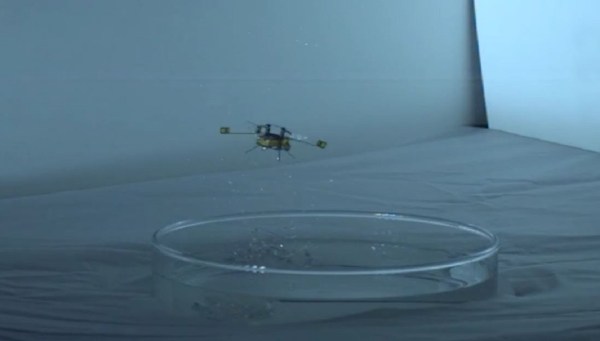You’ve probably heard of micro-drones, perhaps even nano-drones, but there research institutions that shrink these machines down to the size of insects. Leading from the [Wiss Institute For Biologically Inspired Engineering] at Harvard University, a team of researchers have developed a miniscule robot that — after a quick dip — literally explodes out of the water.
To assist with the take off, RoboBee has four buoyant outriggers to keep it near the water’s surface as it uses electrolysis to brew oxyhydrogen in its gas chamber. Once enough of the combustible gas has accumulated — pushing the robot’s wings out of the water in the process– a sparker ignites the fuel, thrusting it into the air. As yet, the drone has difficulty remaining in the air after this aquatic takeoff, but we’re excited to see that change soon.
Looking like a cross between a water strider and a bee, the team suggest this latest version of the RoboBee series — a previous iteration used electrostatic adhesion to stick to walls — could be used for search and rescue, environmental monitoring, and biological studies. The capacity to transition from aerial surveyor, to underwater explorer and back again would be incredibly useful, but in such a small package, it is troublesome at best. Hence the explosions.
Continue reading “This Drone Can Fly, Swim, And Explode….. Wait, What?”











